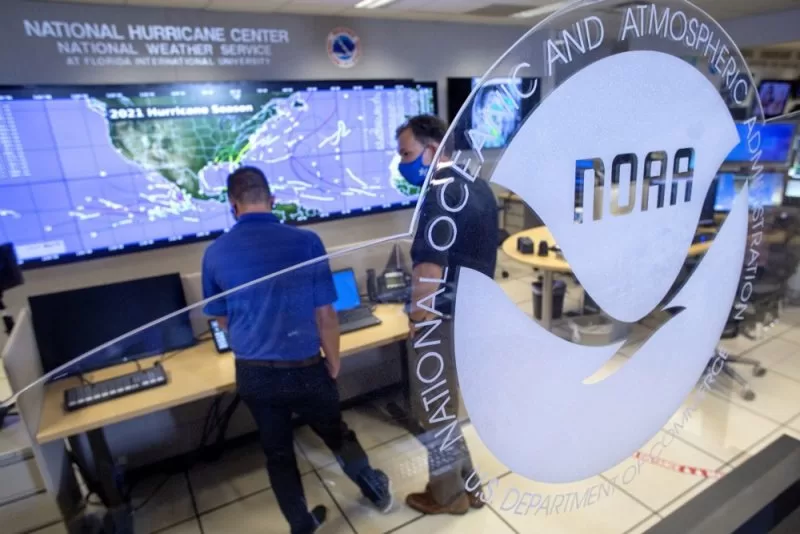1 of 2 | On Tuesday, the NOAA, which is an arm of the U.S. Commerce Department, announced that $15.3M from the Inflation Reduction Act will be used to improve climate projections of future extreme weather events. File Photo by Cristobal Herrera-Ulashkevich/EPA-EFE
Oct. 8 (UPI) — As extreme weather events continue to devastate locales around the world, the United States hopes a more-than $15 million investment in National Oceanic and Atmospheric Administration work will improve climate projection models and better explain “key phenomena” in unique weather patterns.
On Tuesday, NOAA, which is an arm of the U.S. Commerce Department, announced that $15.3M from the Inflation Reduction Act will be used to improve climate projections of future extreme weather events.
NOAA officials say that the new projections are an answer to public demand and will be used for several more decades to come.
An NOAA official said the services and results from new research that will come from it will be “crucial” for “community resilience” throughout the United States.
A recent report said 2023 set new records on heat and for other climate-change factors.
But with the multi-million dollar infusion of dollars, the agency and its partners will be able to work directly with “diverse end-user groups to co-develop climate services tailored to specific needs such as addressing coastal inundation, extreme heat, wildfires and other climate impacts,” Jainey K. Bavishi, NOAA’s deputy administrator and the Commerce Department’s assistant secretary for oceans and atmosphere, said Tuesday in a news release.
Experts say its clear that climate change was the root of “historic” flooding that exasperated rainy weather conditions that hit central and eastern Europe in September and which left dozens dead.
According to NOAA officials, this investment will improve understanding of how “key phenomena” in the climate system are changing. The agency will then be able to further its ability to move climate model data from research into user-focused apps “for reliable, long-term extreme weather climate information.”
Antarctica, the once solidly-frozen continent at the bottom of the southern hemisphere, is rapidly growing green in some places, according to new research.
U.S Secretary of Commerce Gina Raimondo says this investment via the “historic” Inflation Reduction Act will aid development of newer information services “to help communities better prepare for the impacts of extreme weather and climate disasters brought on by climate change,” she said.
Specifically, the weather regulatory agency said the money will support climate projections that will span the next several decades to provide “transparent climate information for users,” which NOAA adds will address a “wide array” of known climate risks like heavy precipitation, extreme temperatures, drought and coastal flooding.
New information and research will be used, as an example, to support things such as decisions on future public infrastructure development projects, the deployment of certain “energy systems” and financial investment decisions which can extend for years into the future.
The American Society of Civil Engineers will be NOAA’s “key initial partner” in the co-development of new capabilities, official said.
As part of that effort, researchers will work with decision-makers and other groups focused on western water resources, heat waves, coastal flood risk, wildfire risk and extreme wind events, “to develop customized climate information,” according to NOAA.
Ultimately, Raimondo added, it will ensure American families in communities “across the country stay safe as we continue to mitigate the rising challenges from the climate crisis.”
